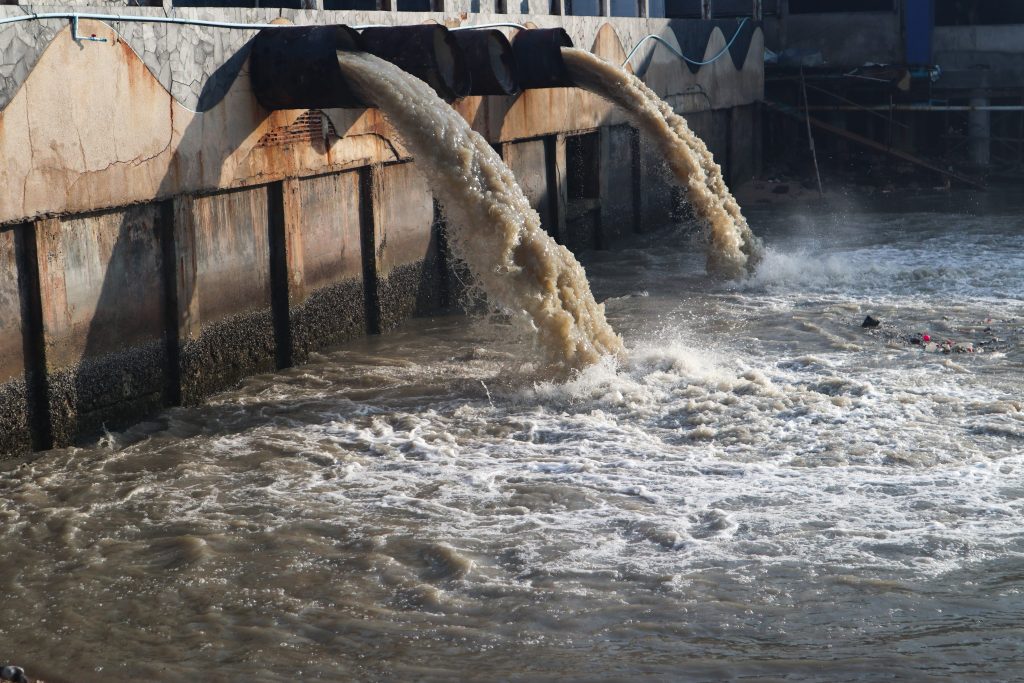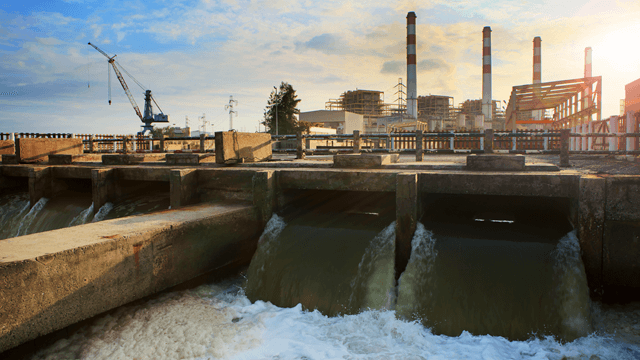Industrial Waste Water Treatment-- Advanced Solutions for Cleaner Effluents
Industrial Waste Water Treatment-- Advanced Solutions for Cleaner Effluents
Blog Article
Technologies and Developments in Industrial Waste Water Therapy Technologies
The landscape of industrial wastewater therapy is undergoing a transformative shift, driven by developments that enhance both efficiency and sustainability. Arising innovations, such as membrane layer bioreactors and microbial fuel cells, are redefining contaminant removal procedures while contributing to power generation. Furthermore, source recovery techniques are gaining traction, straightening with circular economic climate concepts. As governing standards progress, the integration of AI and artificial intelligence into wastewater monitoring systems promises to improve procedures and ensure compliance. Nevertheless, the complete effects of these advancements raise crucial concerns concerning their scalability and long-term effect on market techniques.
Overview of Drainage Therapy Technologies
Wastewater therapy modern technologies include a series of methods designed to get rid of impurities from industrial effluents before their launch right into the setting. These modern technologies are critical for keeping environmental balance and ensuring conformity with ecological policies. The primary groups of wastewater therapy include physical, chemical, and organic techniques, each serving distinctive functions based upon the nature of the contaminants existing.

Organic therapy approaches employ bacteria to break down natural issue, making them particularly effective for organic-rich effluents. Strategies like activated sludge and biofilm reactors harness the natural deterioration abilities of germs, bring about significant reductions in biochemical oxygen demand (FIGURE)
Advanced Purification Methods
Advanced filtering techniques represent a vital evolution in the realm of commercial wastewater therapy, improving the efficiency of contaminant elimination processes. Industrial Waste Water Treatment. These methods encompass a variety of technologies, including microfiltration, ultrafiltration, nanofiltration, and turn around osmosis, which give consecutive obstacles for different bit sizes and chemical structures
Microfiltration and ultrafiltration use membrane systems to remove put on hold solids, microorganisms, and bigger organic molecules, boosting the top quality of effluent before additional treatment. Nanofiltration bridges the void in between ultrafiltration and reverse osmosis, efficiently getting rid of organic compounds and divalent ions, hence lowering the tons on downstream processes.
Reverse osmosis offers the highest possible degree of purification by allowing just water and little molecules to go through its semi-permeable membrane layers, making it optimal for reclaiming top quality water from commercial effluents. Current developments in membrane layer innovation, including the growth of more fouling-resistant and sturdy materials, have actually substantially enhanced functional effectiveness and reduced expenses.
Incorporating these innovative filtration strategies not only boosts the overall therapy procedure however additionally adds to sustainability initiatives by allowing water reuse and source recovery in commercial setups. (Industrial Waste Water Treatment)
Biological Therapy Developments

Additionally, the development of crafted biological systems, such as membrane layer bioreactors (MBRs), integrates biological treatment with advanced membrane filtration. This integration enables higher effluent high quality and decreased impact, making it appropriate for space-constrained industrial facilities. Innovations in genetically crafted microorganisms have actually also arised, enhancing the biodegradation of certain contaminants, such as drugs and heavy steels, that are typically testing to remove.
In addition, the implementation of bioaugmentation methods, where advantageous germs are introduced to improve the existing organic treatment procedures, has actually shown encouraging cause boosting therapy performance. These advancements jointly signify a pattern in the direction of more reliable and sustainable organic therapy methodologies that can adapt to the see this site advancing intricacies of commercial wastewater streams. As industries remain to prioritize ecological conformity, these organic developments will play an important role in wastewater management.

Resource Recuperation Techniques
In industrial setups, the integration of source healing techniques has come to be progressively vital for boosting sustainability and reducing waste. These approaches concentrate on removing important products and energy from wastewater streams, therefore transforming possible pollutants right into multiple-use sources.
One famous approach is nutrition recuperation, where nitrogen and phosphorus, commonly existing in excess in wastewater, are recorded and exchanged plant foods. This not only decreases ecological influences but likewise gives a circular economic situation solution for agricultural applications. In addition, technologies such as anaerobic digestion permit the conversion of natural waste into biogas, a renewable resource source that this link can counter nonrenewable fuel source use in commercial procedures.
Furthermore, advanced filtering and membrane layer modern technologies facilitate the healing of commercial byproducts such as salts and metals. These recuperated products can be rehabilitated right into production processes, decreasing the requirement for virgin sources.
Future Fads in Drainage Monitoring
As sectors increasingly prioritize sustainability, the future of wastewater management is readied to go through substantial makeovers. Technical advancements, such as synthetic intelligence anchor and device knowing, will allow much more effective tracking and management of wastewater systems. These innovations can predict maintenance needs, optimize treatment processes, and boost decision-making, inevitably lowering functional expenses and environmental impact.
Moreover, the integration of round economic situation concepts will play a crucial duty in wastewater monitoring. Industries are anticipated to move towards systems that not only deal with wastewater however likewise recover beneficial sources, such as nutrients, water, and energy. This transition will certainly lessen waste and advertise the reuse of materials, straightening with international sustainability goals.
Arising therapy techniques, such as membrane layer bioreactors and progressed oxidation processes, will certainly additionally enhance the performance of wastewater therapy, allowing for higher top quality effluents appropriate for reuse. Additionally, governing frameworks are most likely to progress, emphasizing more stringent requirements for wastewater discharge and motivating markets to take on ingenious treatment options.
Conclusion
In final thought, the development of industrial wastewater therapy technologies demonstrates a significant shift in the direction of boosted performance and sustainability (Industrial Waste Water Treatment). Innovations in advanced filtering methods, organic therapies, and source recuperation approaches highlight the industry's dedication to environmental stewardship.
The landscape of industrial wastewater therapy is undergoing a transformative shift, driven by advancements that boost both performance and sustainability.Wastewater therapy modern technologies incorporate a range of techniques made to get rid of impurities from commercial effluents prior to their launch right into the atmosphere.Taking advantage of the power of biological processes has led to significant innovations in the treatment of commercial wastewater.In addition, the execution of bioaugmentation techniques, where useful microorganisms are introduced to enhance the existing organic therapy procedures, has shown encouraging outcomes in enhancing treatment efficiency. These technologies jointly represent a trend towards even more lasting and effective biological treatment techniques that can adjust to the developing complexities of commercial wastewater streams.
Report this page